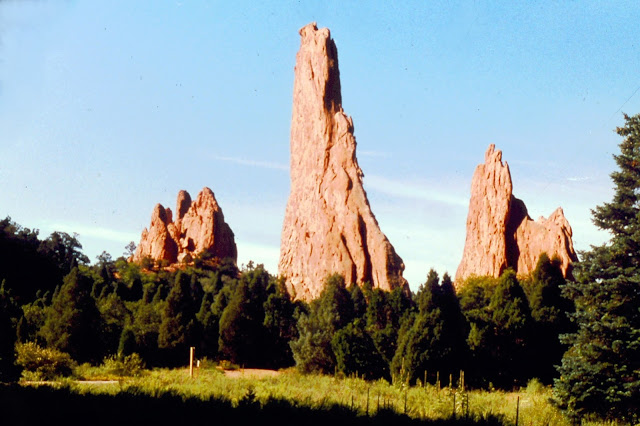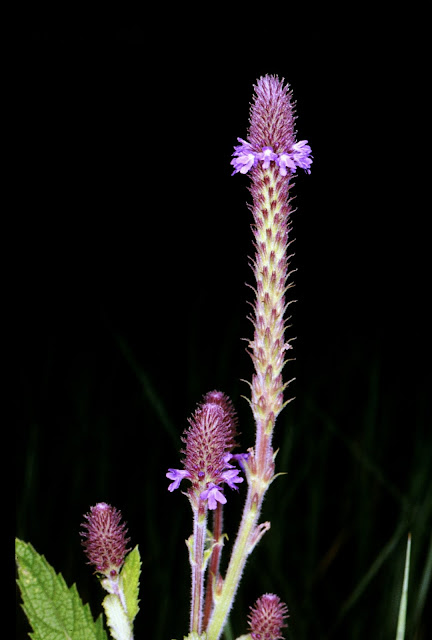Summer is a great time for wildflowers in Colorado, even in the lower, drier areas, as there is summer rain there. In California at this time the wildflower show has already retreated to the high alpine meadows. So we see many amazing things, including bright red blossoms of
Sphaeralcea and
Ipomopsis, indicating that many hummingbirds must be passing through the state.
 |
| The Garden of the Gods, near Colorado Springs, provides some of the most striking scenery in Colorado, and a good place for wildflowers. |
 |
| One of the common yellow evening primroses, probably Oenothera villosa (Onagraceae). |
 |
| Commonly known as "Butter and Eggs," Linaria vulgaris is a common, though exotic, relative of the Snapdragon. |
 |
| The red flowers of Ipomopsis aggregata, in the Phlox Family (Polemoniaceae) hang downward in order to exclude nectar feeders other than the agile hummingbirds. |
 |
| Liatris punctata (Asteraceae). |
 |
| Ratibida columnifera (Asteraceae). |
 |
| Wild sunflowers, Helianthus annuus, occupy an open roadside. Note that the light is coming from behind the flowers, dispelling the myth that sunflowers turn during the day to follow the sun. |
 |
| Geranium caespitosum provides a daintier decoration for open fields. |
.
 |
| Mentzelia multiflora (Loasaceae) has some of the largest individual flowers in the southwest, looking almost like a small waterlily. |
.
.
.
.
.
 |
| Erysimum asperum is a member of the mustard family, Brassicaceae. |
 |
| Harebells, Campanula rotundifolia, are a common sight in many parts of the west. |
 |
| Verbena bracteata |
 |
| Geranium richardsonii |
 |
| Thlaspi montanum, called Candytuft or Mountain Pennycress, is in the mustard family (Brassicaceae) |
 |
| The oxeye daisy, Leucanthemum vulgare. |
 |
| Gentianopsis thermalis provides an elegant surprise in the "lowlands" of Colorado. |
 |
| The flowers of Pedicularis groenlandica (Orobanchaceae) have always reminded me of little elephant heads. |
 |
| Pedicularis racemosa has quite a different appearance from it's elephant-headed cousin. |
 |
| Convolvulus arvensis is a common member of the Morning Glory Family. |
 |
| Verbascum thapus flowers close-up. |
 Verbascum thapus, the common mullein, is found in the lower mountain areas. |
.
.
.
.
.
.
 |
| Where the trees end, the alpine meadows begin. Flowers are mostly whites and yellows here late in the season. |
 |
| Cerastium beeringianum forms patches throughout the meadows. |
 |
| Castilleja occidentalis makes itself home in the high alpine meadows of the western mountains. |
 |
| Geum rossii (Rosaceae) provides bright splashes of yellow in the meadow. |
 |
| Sedum debile (Crassulaceae) fills in spaces between large boulders. |
 |
| Sedum debile flowers close-up. This species has rounded leaves, as opposed to the pointed leaves of S. lanceolatum, which is also found in the Rocky Mountains. |


No comments:
Post a Comment
Note: Only a member of this blog may post a comment.